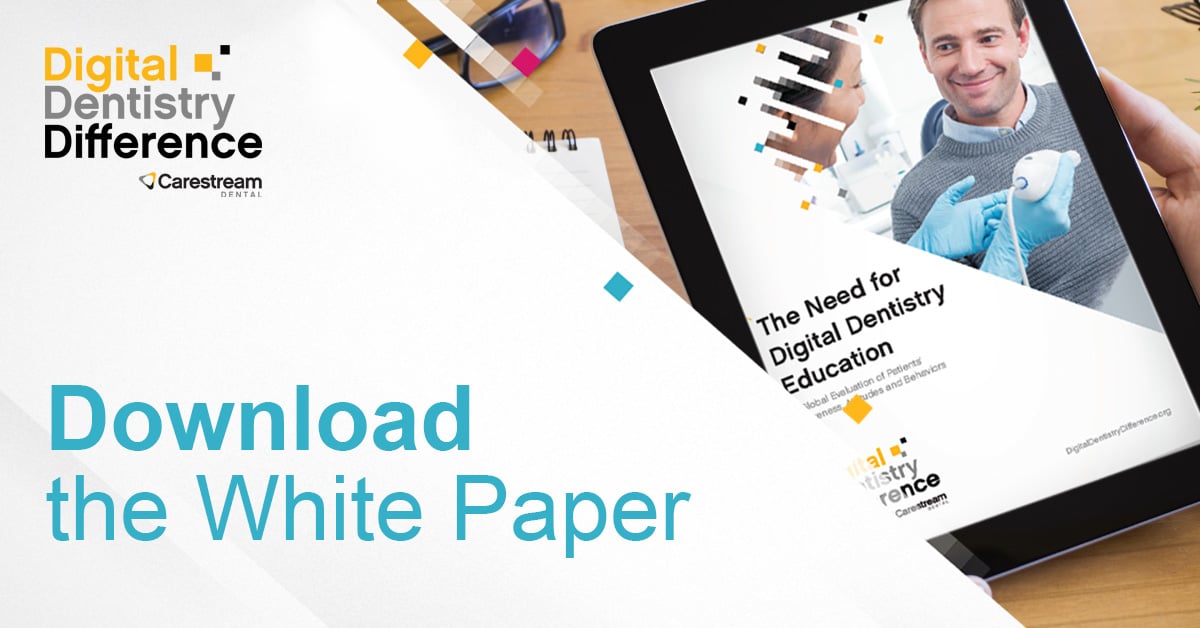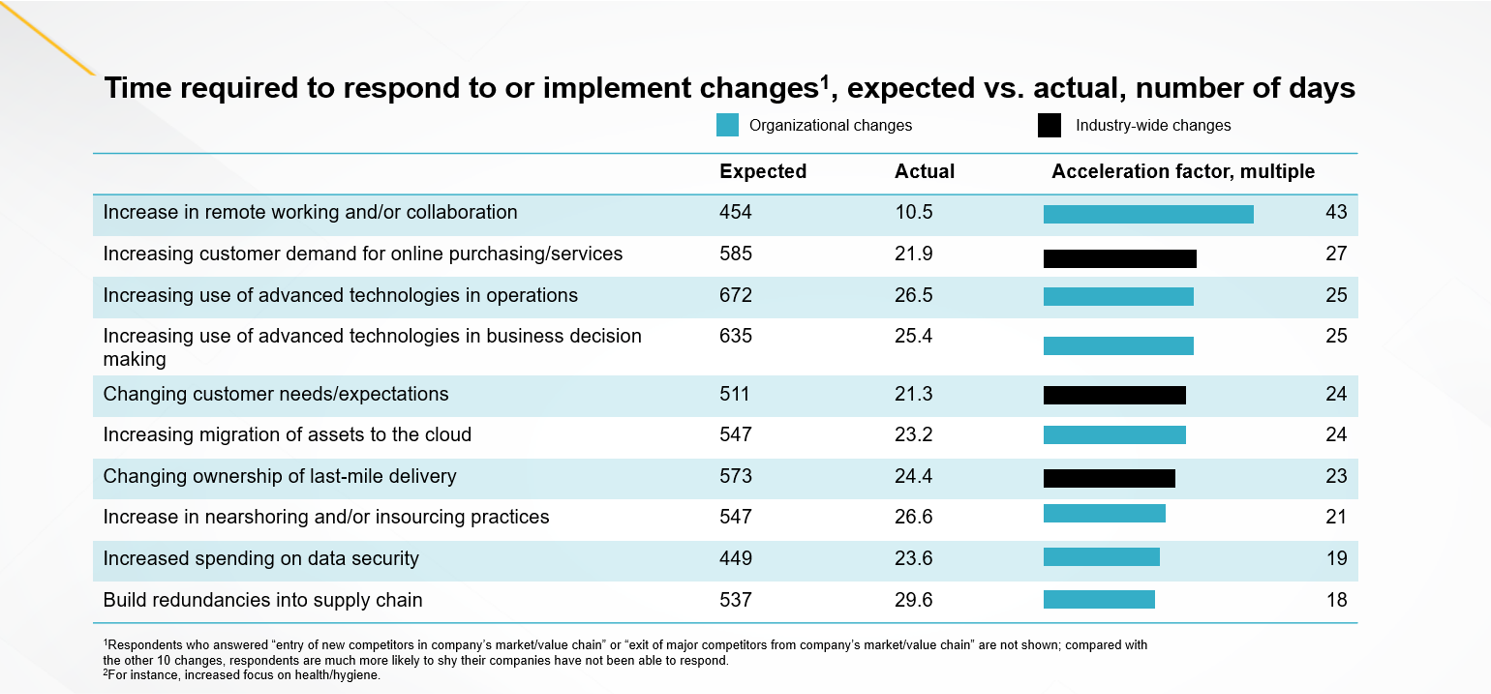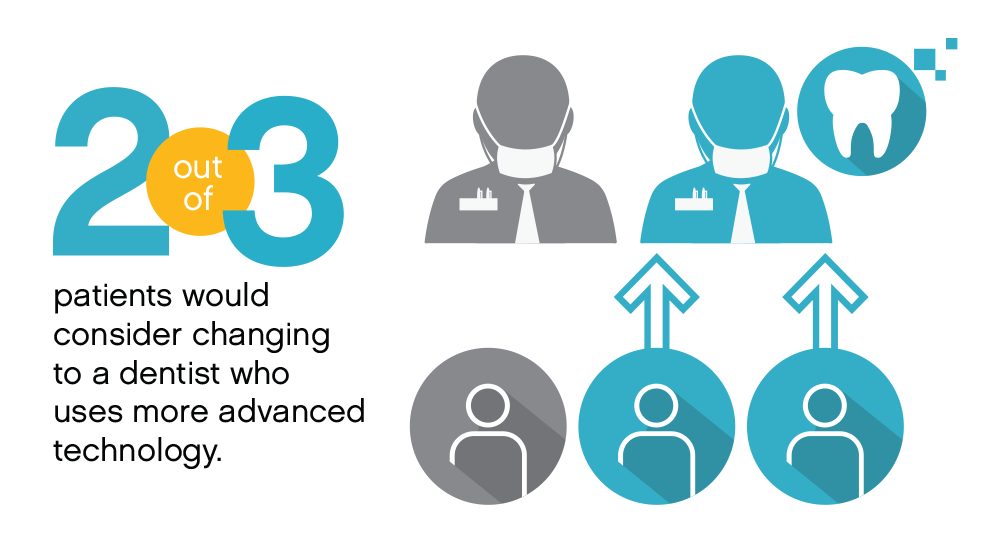Harnessing the Accelerated Digital Transformation in the Dental Practice

The digital transformation has already been in progress for years now. Amazon, Facebook, Netflix and Apple have permanently changed how we shop as well as how we access content and connect with others. And as these business-to-consumer (B2C) companies change the customer experience, customers begin to expect it in other areas of their life.
However, COVID-19 made this evolution move faster than expected. In fact, a survey by McKinsey & Company found that the pandemic accelerated the virtualization of customer engagement and operations for businesses by three to four years.1
Although much has been said about the customer (or patient) facing digital changes—for example, having the ability to order groceries online or meet with a doctor via telemedicine—COVID-19 significantly accelerated a number of digital processes on the backend as well, such as virtual collaboration with peers and migration of data to the cloud.
(Data courtesy of McKinsey & Company)1
While some things may revert after the COVID crisis has waned—almost no one is clamoring for virtual happy hours to stick around—the fact is that digital is transforming dentistry and it’s important to embrace this technology to stay competitive in our changing environment. Automated appointment scheduling, smart image capture and AI-enhanced diagnostic and treatment planning tools will very quickly move beyond “nice-to-haves” and become “must-haves” as patient expectations continue to grow.
Patient Expectations around Digital Technology
In November 2019, Carestream Dental commissioned the first global survey to establish a baseline of patient awareness, attitudes and behavior, and identify areas where education on digital dentistry could enhance patient care.
The “Digital Dentistry Difference: Global Consumer Survey” found that patients are accustomed to advanced technology in everything from their phones to their cars to their healthcare, and they aren’t shy about sharing how it impacts their preferences. Among adults who have ever been to the dentist, most (66 percent) would consider changing dentists to one who uses more advanced technology.
But it isn’t enough to have the digital technology in your office. Two-thirds of adults who have been to the dentist would like their doctor or dental assistant to talk in more detail about the technology they use to care for their patients’ oral health.
Digital dentistry education can also drive new patient traffic and help more people get the care they need. Among adults who haven’t been to the dentist in at least two years, nearly two in five say they would visit their doctor if they received some form of education about the technology, specifically how digital is increasing comfort (24 percent), improving results (22 percent), or improving how they understand their oral healthcare (20 percent).

Using Digital to Transform the Practice
The digital transformation is nothing new to dental health professionals, who have seen film switch to sensors, conventional impressions to intraoral scanners and paper files to digital. But there is no denying that the past year has also had an impact on how practices interact with their patients. From asking patients to text when they arrive at the practice to automating delivery of COVID questionnaire forms, digital has played an important role as dental practices adjusted to new ways of engagement.
Below are some ways that digital can play a role in your business plans going forward.
Filling your schedule
Years ago, acquiring new patients meant word-of-mouth referrals, an ad in the Yellow Pages and insurance referrals—just to name a few. Now, patients’ “shop” for a dentist like they would shop for their latest home appliance: They visit your website and read reviews.
Through the use of patient engagement services, you can automate your online reputation management and even allow patients to book appointments on your website—which provides flexibility around the patients’ schedule and saves your front-desk team valuable time.
The patient recall process is also improved through practice management software and electronic services, which can help identify patients who are due for an appointment and send communications encouraging them to reschedule.
Additional features, such as text-based appointments, can reduce no-shows by 27 percent. With 97 percent of American adults texting weekly2 and a third of Americans preferring text to phone calls, engaging with patients in new ways can have significant business impacts.
Practicing safely
A 2020 study by Deloitte found that U.S. searches for “contactless” increased almost 700 percent on Google between November 2019 and April 2020.2 People are looking for ways to maximize their safety, whether that means making contactless payments or utilizing virtual waiting rooms before appointments.
Of course, oral healthcare professionals have always adhered to the highest standards of infection control but demonstrating extra attention to hygiene and maintaining social distance during these times give patients additional peace of mind. Going digital can help with that. For example, electronic patient registration forms reduce contact and the reliance on paper, while contactless payment terminals can improve safety and efficiency.
Managing cashflow
Through smart practice management solutions and electronic services, you can automate many of the processes to file insurance claims and collect payments.
Practices that switched to filing claims electronically reduced reimbursement waiting time by over 75 percent, significantly expediting payments into the practice. Not only that, they could reduce their paper and postage costs by 86 percent. And, offering patients the option of online payments reduces the cash receipt timeline by three weeks on average versus traditional payment methods such as mailing in a check or calling the office to pay.
Operating virtually
One of the biggest benefits of migrating to the cloud is having the ability to access your practice information any time, from anywhere with an Internet connection. This means that many of the tasks that required staying late in the office can now be accomplished wherever you are.
Cloud computing also opens up possibilities when it comes to case collaboration. Through cloud imaging applications, you can view intraoral scans, CBCT data, STL date and images with a single click and then share that information with other healthcare providers.
And, with the cloud, you no longer need to rely on onsite servers, which reduces your IT costs and eliminates the need for additional data backup and/or hosting services. Data remains encrypted throughout the transfer process to ensure the compliance of your practice, as well as the privacy of your patients.
Automating diagnosis and treatment planning
“Big data” is more than just a buzzword—it’s something that’s transforming dentistry by enabling improved artificial intelligence.
Imagine capturing a cephalometric scan, pushing a button and then having the tracing rendered automatically—in your preferred format—for you. Or using an algorithm to better diagnose caries. Or running a digital impression through your model software to determine the difficulty of an aligner case.
Artificial intelligence is just the next phase in the digital dentistry evolution, and the benefits will be significant. Time savings, enhanced patient communication and improved case acceptance are just a few of the advantages that AI can deliver.
As digital becomes more engrained in our everyday lives, it makes sense that it will continue to have an impact on the practice of dentistry. Incorporating digital into your overall business plan will continue to drive value long after the world returns to (almost) normal.
1 McKinsey & Company. (2021, February 18). How COVID-19 has pushed companies over the technology tipping point--and transformed business forever. McKinsey & Company. https://www.mckinsey.com/business-functions/strategy-and-corporate-finance/our-insights/how-covid-19-has-pushed-companies-over-the-technology-tipping-point-and-transformed-business-forever.
2 A case of acute disruption. (2020, August 6). Deloitte Insights. https://www2.deloitte.com/us/en/insights/topics/digital-transformation/digital-transformation-COVID-19.html.
Contributors

Categories
- Blog
- Industry News
- COVID-19
- Tips and Best Practices
Share







